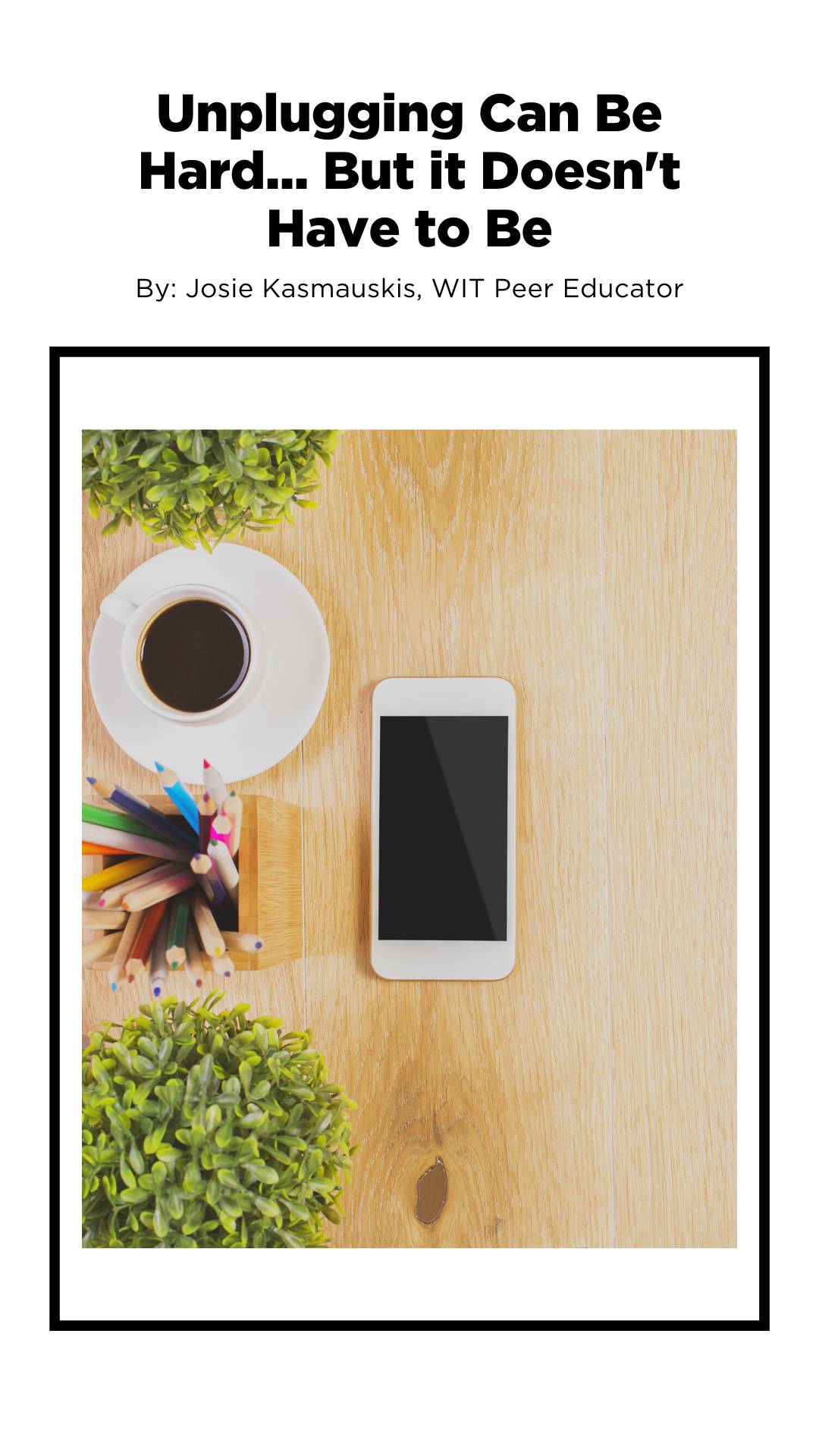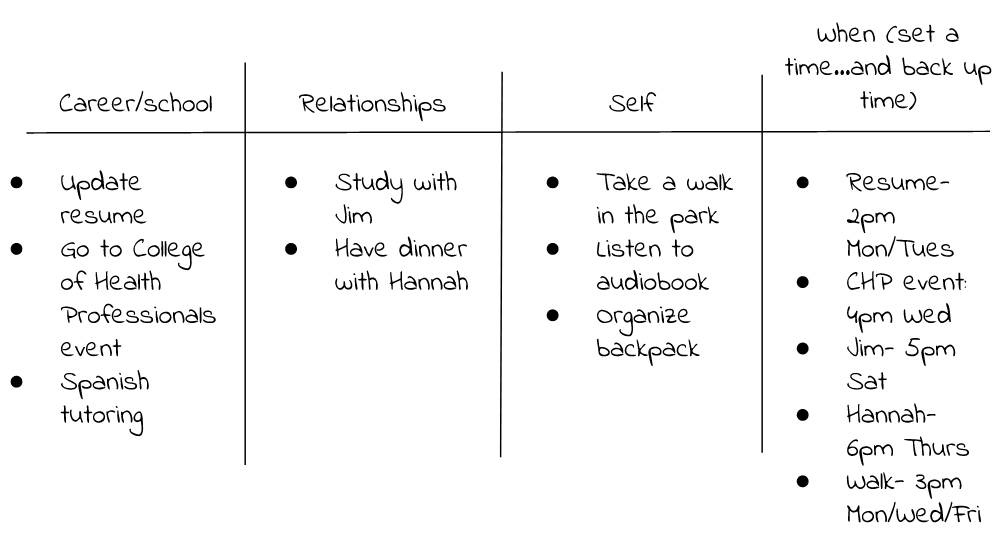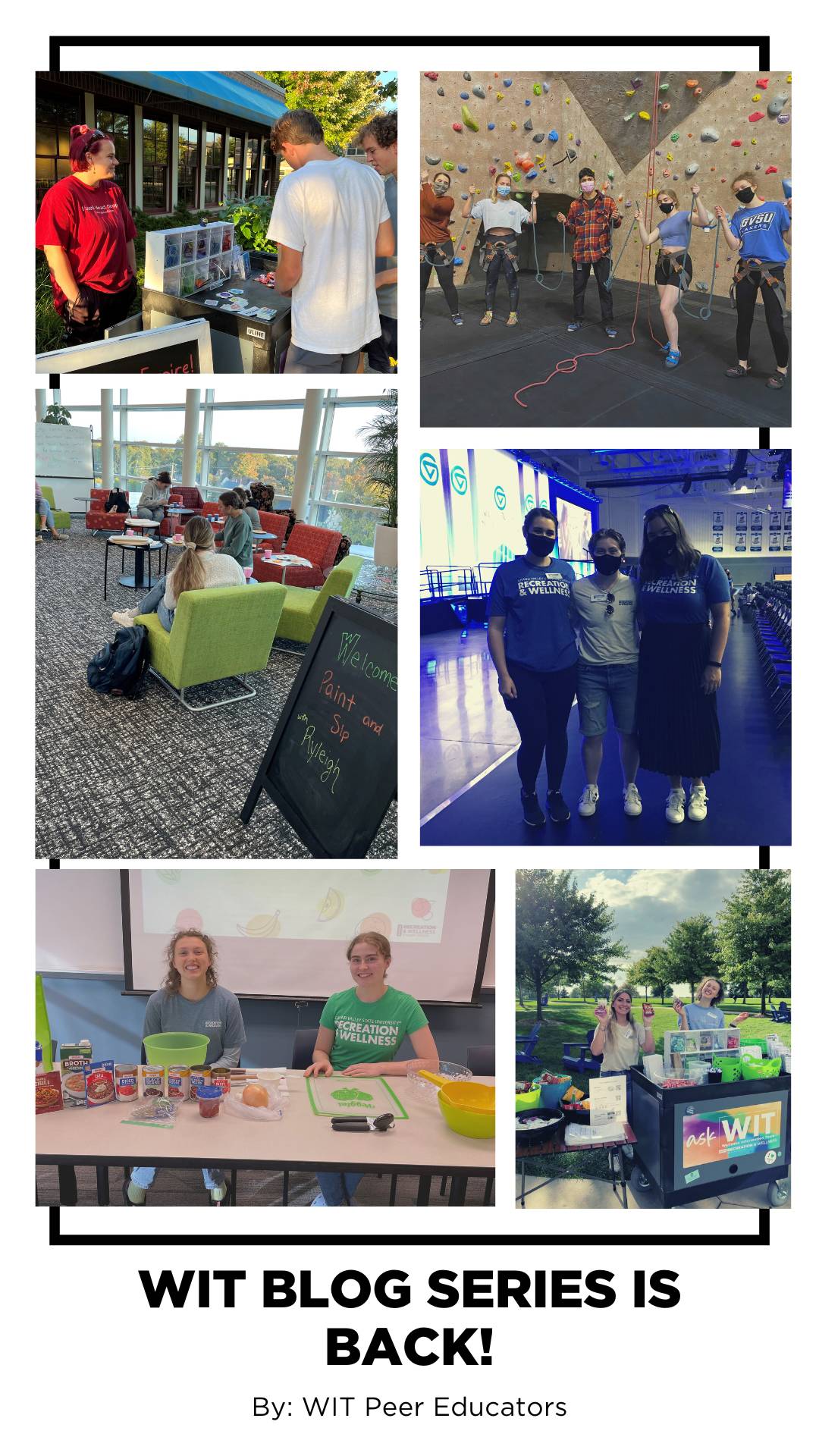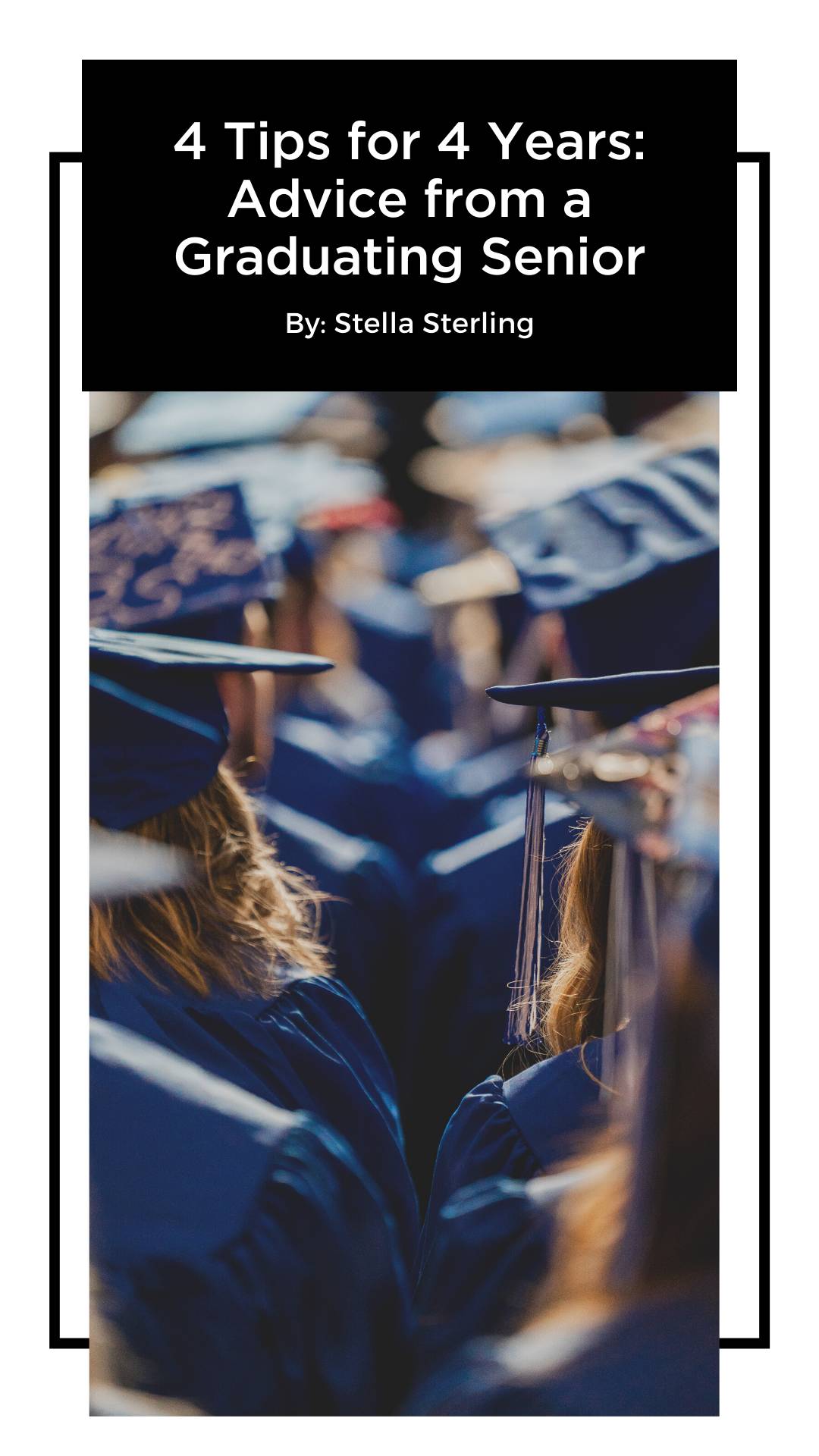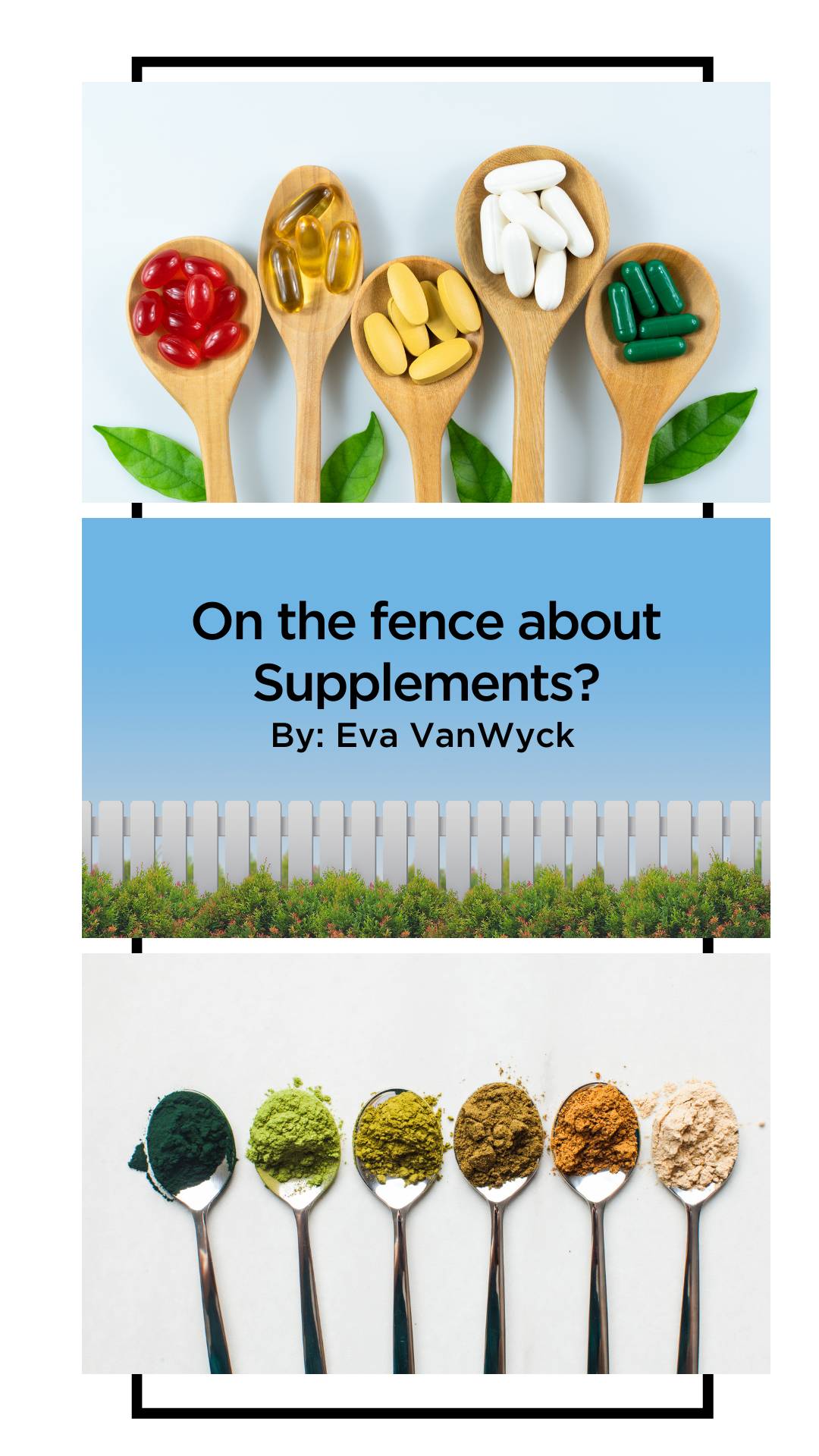Blog
Permanent link for Press Pause... and Get Outside! on April 7, 2023
It is that time of the school year again for finals, but don’t let studying take up too much of your time! It is important to balance school and time for yourself. The flowers are blooming, the sun is shining, and the birds are calling your name! But don’t forget to wear sunscreen!
What the outdoors can do for you!
- Helps motivation and physical health
- Lowers stress and anxiety levels
- Improves sleep
- Stronger immunity
- Supports positive mental health
- Better breathing and sight
Tips for getting outside!
- Make plans with a friend
- Block an hour out of your schedule
- Set a time limit for studying
- Make a reminder
Things to do outdoors on campus!
- Hammock in the arboretum
- Go hiking on the trails behind campus or near Laker Village
- Set up a slackline with a friend
- Have a picnic
- Play sand volleyball
- Read a book or make friendship bracelets on a blanket
- Eat lunch with a friend on a bench
- Ride your bike
- Take a nap under a tree
- Go on a scavenger hunt
- Roller Skate or skateboard on the sidewalks
- Set up your yoga mat in the sun
The outdoors improves your overall health! There are many ways to get outdoors on campus. And remember to treat the outdoors with kindness. We want our favorite places to last a long time!
By: Ruhi Khanna, WIT Peer Educator and Climbing Center Staff
Categories:
General Wellness
Outdoor Adventures
Press Pause
Rest
Posted
on
Permanent link for Press Pause... and Get Outside! on April 7, 2023.
Permanent link for Sexual Health Education is A SHORE Bet! on March 31, 2023
When I was 11 years old, I was channel surfing and came across something I had never seen before: A group of people at a beach house, drinking, having sex, and fighting with weird accents. This mess of a show was the MTV hit, Jersey Shore. Watching this crazy gang of 20 somethings party in their beach house was very interesting, but extremely complex for my 11 year old brain. What were they doing? I knew I probably should not be watching it, but I didn't know why. As I got older, abstinence sex ed was taught at my school. A quote that closely describes my experience is a classic from Mean Girls, “Don’t have sex, because you will get pregnant and die.” I thought about Snooki and the gang, and from what I was being told, they definitely were not following “the rules.” From then on, my brain put an unfortunately false puzzle together: sex must be a shameful thing that only leads to chaos. I stopped watching Jersey Shore after that.
Yes, I acknowledge that Jersey Shore is probably not the best influence when it comes to safe sex and healthy relationships (especially for an 11 year old). But looking back, that group was a lot better off than I was. Throughout high school, I continued to view sex as a shameful thing. It wasn’t until college that I started to understand the construct around sex and the importance of safe, inclusive, and empowering sexual education.
What is Sexual Education
Sexual education is the teaching of a large variety of topics surrounding sex and sexuality. This can include safe sex, STIs, relationships, consent, LGTBQ+, and many more topics! Most middle and high schools provide sexual education, but a large majority of schools in the United States do not teach all aspects of sexual health. According to Planned Parenthood, In the 37 states that require sex/HIV education, a majority stress abstinence, even if that means the curriculum is not medically accurate. Only 18 states require education on birth control. Only 10 states require education on LGBTQ+ sex and relationships (Planned Parenthood, 2023). Most students are not being given the well rounded sexual education that they deserve.
So why does this matter? Safe, inclusive, and empowering sexual education gives students the knowledge and skills necessary to express themselves, create healthy boundaries, be safe, and understand their bodies!
Sex Ed in College
Sexual education is very important in college, because students can gain knowledge they may not have received in high school. For a large majority of students, college is a time for self exploration. Students are given the space to learn more about themselves, their values, beliefs, and are able to explore their sexuality. Due to this, it is important that students are given sexual education tools that promote safety, respect, pleasure, and fun. Not all people choose to engage in sexual activity, and that is okay. All students, whether sexually active or not, deserve to be given safe and inclusive spaces to learn and grow in their own sexuality if they choose to do so.
Sexual Health at GVSU
Grand Valley offers an abundance of sexual health education opportunities. The Wellness Information Team (WIT) is a team of GVSU students that provide education and resources on sexual health (as well as general health and nutrition). We provide a large variety of programming, presentations, and supplies to aid students in their sexual health and overall wellness. We can even take the educational fun on the go with our WIT Cart. This cart has tons of safer sex supplies, including a variety of condoms, dental dams, internal condoms, and lube. We also have candy, stickers, fidgets, relaxation aids, and so much more! To find the WIT cart’s location, check out the RecWell Instagram! We always post where we are around campus.
Sexual Education is A SHORE Bet!
Sexual health education is extremely important to have on college campuses. Since many students come to college without comprehensive sexual education, the information and tools need to be provided to help students make empowered and safe decisions about their sexual health. Grand Valley was able to provide this for me as an awkward, abstinence-only scarred, jersey shore loving, freshman. And I could not be more grateful! With that, I will leave you with an inspirational quote:
“Yes, I had sex. Like, hello, you can have sex if you're into somebody. It's natural.” — Sammi “Sweetheart” from Jersey Shore
By: Annie Seeber, WIT Peer Educator
Categories:
General Wellness
Sexual Health
Posted
on
Permanent link for Sexual Health Education is A SHORE Bet! on March 31, 2023.
Permanent link for The Power of Meditation and How to Use It on March 22, 2023
Meditation is a powerful tool that can help you achieve mental, emotional, and physical wellness. As a college student, you may face many challenges, such as stress, anxiety, and a lack of focus. Meditation can help you overcome these challenges and improve your overall well-being.
What is meditation?
Meditation is a practice that involves training your mind to focus on the present moment. It can involve different techniques, such as deep breathing, visualization, and mindfulness. The goal of meditation is to quiet the mind and achieve a sense of inner peace and calm.
How can meditation benefit college students?
- Reduces stress and anxiety: College life can be stressful, and it can lead to anxiety and other mental health issues. Meditation has been shown to reduce stress and anxiety levels, and improve overall mental health.
- Improves focus and concentration: Meditation can help you improve your focus and concentration, which can be beneficial for your academic performance. By training your mind to focus on one thing at a time, you can improve your productivity and efficiency.
- Enhances self-awareness: Meditation can help you become more aware of your thoughts and emotions. By observing your thoughts without judgment, you can develop a better understanding of yourself and your feelings.
- Improves sleep quality: College students often struggle with sleep issues, such as insomnia or sleep deprivation. Meditation can help you relax and calm your mind, which can improve your sleep quality and quantity.
How to get started with meditation?
- Find a quiet and comfortable space where you won't be disturbed.
- Sit in a comfortable position with your back straight and your eyes closed.
- Take deep breaths, inhaling through your nose and exhaling through your mouth.
- Focus your attention on your breath, and try to keep your mind from wandering.
- If your mind does wander, gently bring your attention back to your breath.
- Practice meditation for at least 5-10 minutes a day, and gradually increase the time as you become more comfortable with the practice.
In conclusion, meditation is a simple yet powerful practice that can help college students achieve mental, emotional, and physical wellness. By incorporating meditation into your daily routine, you can reduce stress and anxiety, improve focus and concentration, enhance self-awareness, and improve sleep quality. Give it a try and see how it can benefit you.
By: Abdul Ciise, WIT Peer Educator
Categories:
General Wellness
Press Pause
Rest
Posted
on
Permanent link for The Power of Meditation and How to Use It on March 22, 2023.
Permanent link for Keto vs Fruitarian: All about those Carbs on March 17, 2023
Keto versus Fruitarian
One moment we hear “Cut out all carbs!” and then the next we hear “Avoid all forms of fats!” It gets hard to believe what any of these diets are trying to promote. New diet fads are being created and spread constantly, but what do they even mean? Do they have any benefits? Or is it just all a scam to try to fit into unrealistic body standards or even to buy someone’s book or program regime. Carbs in the diet world today are a hot topic and the debate on whether to have them or not is at an all time high. We’ll look into two diets that are almost exactly opposite of each other; the keto diet and the fruitarian diet.
What’s a carb?
First, let’s dive in to make sure we’re all on the same page on what a carb even is. A carbohydrate is one of the three macronutrients. Macronutrients are essential for the human body, meaning we need all three in our diets. The other two macronutrients include fats and proteins (in addition to carbohydrates). Carbohydrates come in the forms of starches, fiber and sugars (Mayo Clinic). Sugars are the simplest form of carbohydrates, starches are more complex, and fiber is the indigestible part of the carbohydrate. The simple sugars in carbohydrates should be eaten in moderation, while starches and especially fibers have the best health effects, like improved digestion and benefiting heart health. In comparison to the other macronutrients, it is recommended that carbohydrates take up 45-65% of total calories. Fats are recommended to be 20-35% of calories and protein are recommended to be 10-35% of calories. Carbs are the main source of energy for the body and the preferred source of energy for the brain (Mergenthaler). Now that there’s some basic background information on carbs, let’s look into the keto diet, where the carbs are limited, and the fruitarian diet, where it is almost completely carbs.
Keto Diet: Get Rid of Carbs
The keto diet focuses on limiting the amount of carbs consumed and instead eating more foods high in fat and protein. The keto diet has the body switch from running on carbohydrates to using ketones as an energy source, by entering ketosis (to learn more about this, check out this link). In ketosis, the liver produces energy from stored fat which is in turn used as the main energy source for the body. People using this diet typically have the goal of losing fat and weight. In addition to losing fat, the keto diet can have possible benefits of managing epilepsy, type 2 diabetes, heart disease, and metabolic syndrome (Mayo Clinic). The keto diet might also increase risk for heart disease as it’s typically high in LDL cholesterol (which is linked to heart disease) and low in fiber (which is helpful against heart disease). The keto diet can also increase risk for nutrient deficiencies, since certain food groups are usually avoided, liver issues, constipation, mood swings and brain fog (Harvard).
Fruitarian Diet: Get Lots of Carbs
The fruitarian diet is almost the polar opposite of the keto diet, in which the majority of calories come from raw fruits, followed by some nuts, seeds, whole grains or vegetables. The fruitarian is typically a raw diet, meaning cooking should be limited or restricted and that it is typically plant-based as well. Fruits are loaded with vitamins and other nutrients in addition to fiber which are all beneficial to one’s health. These can help decrease the risk of certain diseases or cancer (Mayo Clinic). Since this diet is high in fiber, it may decrease cholesterol (Healthline) and as a result lower risk of heart disease. The fruitarian diet may also help someone lose weight, as these foods are naturally low in calories but high in volume, meaning they are not as calorically dense. Of course, there is a list of risks associated with this diet as well. The risks include nutrient deficiencies, such as calcium, omega-3 fatty acids and B vitamins, or just overall malnourishment due to lack of calories from fats and proteins (Healthline).
So, What Do You Do?
By examining these two diets, it can be determined that restricting and cutting out food groups can come with some benefits as well as many risks. It’s important to remember that everything is important and plays it part and moderation should be emphasized. As always when it comes to your own health: if you want specific and safe recommendations for you, talk to the Laker Food Co. dietitian Alyssa.
By: Claire Latourell, WIT Peer Educator
Categories:
Nutrition
Posted
on
Permanent link for Keto vs Fruitarian: All about those Carbs on March 17, 2023.
Permanent link for Caffeine is Keeping You Up on March 1, 2023
March is here, and at GVSU, March is all about sleep! Winter semester is Recreation & Wellness’s Press Pause campaign, and in March we focus on good sleep health and getting adequate rest. I am going to talk all about the relationship between caffeine and sleep so you can start off your March getting the best sleep you can!
You may have read the title of this blog post and thought, “Well yeah, that is why I drink it.” Lots of Americans drink caffeine daily to help them feel alert and awake in the morning. The FDA states that around 80% of US adults drink caffeine daily. It is common to hear tired voices lament that they have not had their coffee yet, especially on a university campus. But drinking caffeine daily can actually be the reason you don't feel alert and rested without your coffee.
Let's start by explaining how caffeine works.
In the brain, you have a chemical called adenosine. This chemical builds up during the hours of the day you are awake and sends a signal that you are tired by binding to special adenosine receptors. So the longer you are awake, the more adenosine builds up and the more tired you feel. When you drink caffeine it makes its way through the bloodstream and into your brain. Caffeine will then bind to the adenosine receptors and block them. This means that although adenosine is still building up in the brain, your body doesn't know that it is tired yet. This is why you sometimes crash mid-day, the caffeine has left your system and isn't blocking those adenosine receptors anymore, leading to a sudden feeling of tiredness. This is also why drinking caffeine later in the day will keep you up, that caffeine is still blocking your adenosine from making you feel tired and getting the rest you need.
So now that you know how caffeine works to make you feel awake, let's talk about how caffeine use affects sleep quality.
Once your caffeine has worn off and you go to sleep, the effects of caffeine consumption still continue. Even if that cup of coffee was early in the day, drinking caffeine still affects your sleep. Caffeine can make it harder to fall asleep, stay asleep, and can overall reduce the quality of sleep you get. Especially if you drink caffeine regularly. Caffeine reduces short-wave sleep; This is the deep restful sleep that makes you feel recharged and alert the next morning.
So what happens for many of us is we don't get good quality sleep so we are tired in the morning and turn to coffee, soda, or other caffeinated drinks. Then that caffeine makes our sleep worse, so we are tired in the morning and drink more caffeine. This creates a vicious cycle of needing caffeine to feel awake because of getting poor sleep. Don't worry coffee lovers, I am not saying you need to give up your favorite part of your morning entirely, but cutting back can improve sleep and stop this cycle.
The safe amount of caffeine in a day is 400 milligrams, which is about 4 cups of coffee. You may not be drinking that much coffee but soda and energy drinks during the day can easily put you over that safe limit. This is also true if you take pre-workout and drink caffeine. Drinking too much caffeine can lead to symptoms I am sure most of us know well, like jitters, nausea, headaches, and a pounding heart rate. It also increases your blood pressure, makes you more dehydrated, and can even cause health issues like problems with digestion.
You can stop this cycle and feel awake without caffeine in lots of different ways. One big one is cutting back on caffeine. If you drink a lot of caffeine or drink caffeine daily this can be hard. One way to do it is to cut back slowly. So if you drink 2 cups of coffee in the morning and an energy drink at lunch, start by just cutting out one of those 3 drinks. Then cut one more, and maybe then you switch to a lower caffeine option like tea. This is going to look different for everyone. Some people may be able to stop drinking caffeine entirely, but for others, caffeine is part of some of their favorite drinks. Just know that cutting back on caffeine (even if you don’t cut it out entirely) will still have benefits.
So now you have cut back on caffeine, but you may still feel a bit tired in the morning. Are there other caffeine-free ways to feel awake?
You bet there are! There are actually a lot. Here is a list of proven ways to boost alertness without that cup of coffee:
- Hydrate throughout your day by drinking lots of water
- Exercise
- Eat some fresh fruit
- Eat a balanced diet
- Nap throughout the day (check out our nap map here!)
If you still can’t shake the sleep off and feel well-rested, there may be some underlying reason for being tired day in and day out. That is when you should talk to your doctor about your symptoms. Conditions like sleep apnea are fairly common, 1 in 15 people in the US has a type of sleep apnea. Sleep apnea can reduce sleep quality and cause other serious health concerns.
Now that you know the ins-and-outs of caffeine and sleep, you are ready to go and tackle your fatigue and get lots of restful sleep. If you want to dig deeper into the topic of sleep, Check out Emilio’s blog post on how sleep impacts fitness, Annie’s blog post on the racial sleep gap, and Stella’s blog post on the importance of sleep.
By: Eva VanWyck, WIT Peer Educator
Categories:
Press Pause
Rest
Sleep
Posted
on
Permanent link for Caffeine is Keeping You Up on March 1, 2023.
Permanent link for Eating as a College Student on February 3, 2023
As college students, many of us are short on time and long on the grind. We have papers piling up, clubs to attend, hours to clock, and so it can be difficult to find time to sit down and nurture our bodies with all of the nutrients that we need. Last year, I found it difficult to find the time to eat, especially being on a budget and being obsessed with eating the ‘right’ way. Sometimes we make a full meal with vegetables, sometimes we have a donut with our coffee. I’d like to discuss the obstacles that come with food when you’re busy and how to improve our relationship with it.
Eating On the Go
First up, addressing the big time constraint. If you’re like me, you’re taking classes full time, working part time, and pulling off multiple extracurriculars and side projects. When you’re busy and on the go, it’s hard to maintain an eating schedule, let alone finding time to eat. You’ve heard it from your friends, you’ve done it yourself; you’re running off a large cup of coffee and nothing else. We are human, we aren’t perfect. However, keeping our bodies nourished should be a top priority. Every meal may not be a five-course endeavor, but you can start by implementing snacks and simple meals. If this means taking a half hour to make some pasta and add some spinach to the sauce, go you! If this means driving to a drive thru before class instead of skipping a meal, still, go you! Making the time, and making the choice, to eat when and where you can will make a difference. You do not want your stomach rumbling in a silent lecture room.
Food Insecurity
I’d like to address and acknowledge the prevalence of food insecurity when it comes to trying to eat and maintain health. According to Basic Needs at GVSU, more than 1,000 students here at GVSU struggle with food insecurity. Food insecurity is the lack of access to nutritious food on a consistent basis. For college students, this might look like not having enough meals on our meal plans or living off of a few packs of ramen for a week. Food insecure college students don’t have enough food to properly sustain themselves through the week and their grades (and health) may suffer from this. While food insecurity is a broad issue, there are some resources out there and even some on our campus.
Replenish is a basic needs center on campus with three different locations. One location is on the lower level of Kirkhof center, in room 074. The other two locations are on the downtown campus located at the Steelcase library building A of the DeVos Center and room 347 of the Cook-DeVos Center for Health Science (CHS 347). Students are welcome to stop in during open hours, check in with staff, and get the food or basic need items they need.
SNAP benefits, or the Supplemental Nutrition Assistance Program, provides supplemental income via a Bridge card to lower-income individuals. While there are eligibility requirements, students can and should consider applying for SNAP. Students can apply for SNAP online and will later be contacted to complete a phone interview. There is no downside to applying for SNAP, the worst thing that can happen is you get denied and the best is that you are approved for benefits! If you need help applying, reach out to the CARE team by filling out a report for yourself.
There are many food pantries across the towns surrounding our campuses, including Love Inc., The Other Way Ministries, and more. Students can search for resources using the Feeding America resource map.
There is nothing to be embarrassed about when it comes to experiencing food insecurity as a student. Many of us come from different backgrounds and experiences and it’s important to recognize them and help one another when we can. If someone you know is experiencing food insecurity, consider finding ways to help them like sharing the resources above. If you are experiencing food insecurity, ask for help and take advantage of the resources available to you. While folks who are experiencing food insecurity have a more difficult time with accessing nutrient-dense foods, it is so important to do your best to eat the food that is available.
Food Guilt
When you don’t have the time or the resources to eat the “right” foods, you might fall ill to food guilt. Food guilt is when you obsess and feel ashamed over the food you eat or think about eating. Sometimes this may look like eating a bag of chips instead of a salad, but the reasons may vary: the chips might be cheaper, the chips might have a higher calorie count and might be more filling, or, simply, you might be craving some chips. All of these reasons are completely valid, and what’s important is that you are eating. The way that diet culture has infiltrated our minds (and bodies) has made us believe that skipping meals is healthier than eating “junk” when in reality, skipping meals has faster, more harmful consequences than eating something unhealthy. Just checkout this resource.
Tips and Tricks
- Eat the foods that make you feel good: try to balance foods for your soul and foods for your gut (instead of chips or salad, why not both, if you can). You do not need to give up any category of food- try to add vegetables and fruits when and where you can. It’s about adding nutrients, not taking them away.
- Have specific foods ready for on-the-go like protein bars, muffins, and yogurt. On busy mornings, afternoons, or evenings- it is helpful to have something ready to grab and take with you. To cut costs, some of these on-the-go items can be meal prepped and ready to have on hand.
- Let go of the stigma surrounding different foods. Every food has its place.
- Have ‘backup’ foods for low-energy days like instant noodles, freezer meals, or even a gift card for a restaurant. It’s better to eat “unhealthy” than nothing. Having easy foods available to you when you’re not feeling your best can help make sure you’re still nourishing your body.
- Experiment with recipes in your free time, and find out what foods you like. You can find recipes online, from family and friends, and even on the RecWell instagram. Budget Bytes is a great resource for cheap and yummy recipes.
- Try to attend a farmer’s market for fresh produce, such as the Fulton Street Farmers Market, a SNAP certified market!
- Try food-prepping meals or try to create a “grazing” plate in the fridge with things like cheese, veggies, crackers, and your favorite proteins (nuts, seeds, meats, meat alternatives, etc.).
What to Avoid Eating
- Foods you have a life-threatening allergy to
- Foods that you dislike
- Inedible objects
- Foods that go against your values (if you’re vegan, religious, or otherwise)
To wrap things up, take care of yourself. I know it can be hard to maintain balance, especially as a student- and even more so if you’re a student with additional barriers. But it’s so important to make sure you’re eating consistently, even if what you’re eating is not always the ‘healthiest’ option. Don’t listen to diet culture and remember to prioritize food.
Additional Links and Resources
https://www.science.org/doi/10.1126/sciadv.abi8807?cookieSet=1
By Rowan Armour, WIT Peer Educator
Categories:
General Wellness
Nutrition
Press Pause
Posted
on
Permanent link for Eating as a College Student on February 3, 2023.
Permanent link for Unplugging Can Be Hard...But It Doesn't Have to Be on January 26, 2023
You know those days when you keep trying to finish a homework assignment and somehow the time keeps flying by…and your phone keeps getting in the way? You rack up all the motivation you have but your phone is just taunting you to pick it up, and somehow you are subconsciously pulling up Instagram, Snapchat, *insert app/social media here* again . A couple hours later you still have more homework to do. The plans you had for the night– watching a show, game night with friends, book reading, video gaming, (or whatever your jam might be)-- become harder to fit in by the minute!
Reasons We Grab Our Phones
It turns out this is not an uncommon scenario, and there are many reasons our phone is the first thing we grab when doing homework or waiting for class to start. One reason could be the feeling of missing out (aka FOMO). A study that collected data from 3,606 college students found that when individuals had FOMO, they often were more likely to feel the urge to grab for their phone. The study also found that FOMO was not as common in those who thought fondly of the future and felt they had a strong social support group.
There are many other feelings like FOMO that could cause us to subconsciously reach for or turn on a screen:
- Screen time can cause the brain to send signals of happiness (in the moment) that the brain increasingly craves
- There is a link between being uninterested and using a phone
- Depending on the person, feelings during social situations could increase phone use
What do you think causes you to look at your phone or pull up a screen? Maybe the above reasons sparked some ideas, maybe not. Either way, the following tips, tricks and resources may help you find out, or at the very least help you to unplug and do what you truly want to do!
Tips,
One way that could prevent FOMO, being uninterested, or having other scenarios leading to high phone use is by following a tip by Laura Vanderkam. In the Food Heaven podcast “Listen to This if You Struggle with Time Management” she says it is a good idea to take some time each Friday and outline a page as shown below:
Using this template, each Friday (or day that works best for you) you can make a plan for the upcoming week, giving you times to look forward to in the following week.
Laura Vanderkam also says that instead of trying to find shortcuts in the day so that there is more time to unplug, it can be easier to simply fill the day with activities that bring you joy. For example, instead of looking for ways to make a Quizlet faster, you could set up a time to hang out with a friend. This planned event will mean there will be less time to make the Quizlet, so you will spend less time making the Quizlet.
Everyone has different priorities so it can be helpful to write down your personal priorities so that it is clear how much time should be spent in each area of your life. This goes along with setting healthy boundaries and making sure to stick with them.
Tricks,
There are various tools you could use to not be tempted to look at your phone. Here are a few of my favorites:
- An app called Flora. I started using it last semester and I give it above five stars! This app allows you to grow plants while staying off your phone. Not to mention, you can grow trees with your friends by joining each other’s study rooms!
- Adjusting settings. Stella mentioned in her Press Pause: Unplugged blog post last year that she likes to adjust the settings of certain apps to notify her when a certain amount of time has passed.
- And my personal favorite, the out-of-sight-out-of-mind method: toss your distracting device in a random drawer or room out of your field of view.
And Resources
If the above tips and tricks are not working for you, or you are having trouble figuring out how this can fit into your daily life, there are many resources on campus that are waiting to help. One of these is the Wellness Navigators at Recreation & Wellness. Wellness Navigators are students like you who can help you with anything related to ways to unplug, setting boundaries, getting connected to resources on campus, time management, or any student or wellness goals you may have. If you sign up, the discussions and meetups with your Wellness Navigator will be completely tailored to what you need, even if that means simply talking over the phone or connecting through email.
For longer-term goals, sign up with a Wellness Coach at Recreation & Wellness. If you are experiencing mental health stressors for more than a few days at a time, the Counseling Center has many services for students that can help.
You Know You
Everyone has different goals and needs, so when reflecting on your phone use make sure you have in mind what is realistic and makes sense for you. The Laura Vanderkam template and the Flora app are only a few ways to stay off your phone, so it’s okay if they don't work for you. There are many ways you can figure out the best strategies for you to unplug, and there are trained students, Wellness Coaches and counselors that are eager to figure it out with you!
By: Josie Kasmauskis, WIT Peer Educator
Categories:
Press Pause
Posted
on
Permanent link for Unplugging Can Be Hard...But It Doesn't Have to Be on January 26, 2023.
Permanent link for WIT Blog Series is Back! on January 25, 2023
The WIT Peer Educators are back again this semester to share about their favorite topics in nutrition, sexual health, pressing pause and so much more. WIT members are GVSU students from a variety of majors and backgrounds. They are brought together by their passion to support their fellow students in pursuing health and wellness.
Stay tuned every Thursday for the latest blog entry. Have ideas for a blog post? Submit a question to our Ask WIT Form and we'll get one written just for you!
By: Katie Jourdan, Assistant Director RecWell
Categories:
General Wellness
Nutrition
Press Pause
Rest
Sleep
Posted
on
Permanent link for WIT Blog Series is Back! on January 25, 2023.
Permanent link for 4 Tips for 4 Years: Advice from a Graduating Senior on April 27, 2022
I can hardly believe I am graduating in a few days. My freshman year was four years ago, but it seems like yesterday. I’ve grown a lot in the last few years, and I often think about how I felt at the start of my degree. In this blog, I hope to share some ideas and resources that have helped me to not just ‘survive’ but thrive in college!
1. Sleep
The importance of good sleep is old news on the RecWell blog - in fact I’ve already dedicated a whole post on how much of an effect poor sleep can have on one's life. This was something that I had struggled with in high school; come my freshman year I reached a point where I had to make a change.
I was formally diagnosed with insomnia and greatly appreciate the help of my doctor and counselor. It can be scary to walk into these spaces but understand that they are here to help you! Everyone should be sleeping at least 7 hours on a consistent schedule. In order to fix my sleeping patterns I set specific bed and wake up times. I also used sound-canceling headphones or white noise such as a box fan or the app BetterSleep along with techniques learned in my counseling sessions.
2. Get organized (and motivated).
A good planner can help you reach your academic and personal goals. This may be a physical planner or something online. I personally carried a notebook or daily planner then at the end of the day entered important due dates into a google calendar. My google calendar leads into the next and maybe most important point of this topic: motivation.
What motivates you to complete your work? For me, I loved to make things look aesthetically pleasing. I color-coded my google calendar, created Pinterest moodboards, and used studying websites such as LifeAt to keep myself motivated and organized. Explore different studying techniques - what works best for you?
3. Understand your relationships.
We make a lot of connections in our daily life. It can be hard to find where you fit in, or to figure out which relationships are actually a positive influence. It can be scary to put yourself out there or walk into new spaces. - but college provides us with so many opportunities to do so! Getting involved in a new sport, joining a club, or something smaller like turning to the person next to you in a class can lead to connections.
Sometimes you may have relationships that aren’t so positive. It is ok to set boundaries with people in your life, whether it’s a professor, a roommate, or a close friend. Not sure how? Our Wellness Coaches and Wellness Navigators can help!
4. Find what helps you destress.
College is stressful and can make it feel like everything is in a state of constant change. It’s easy, and well sucks, to just sulk in your room all day. What do you actually enjoy doing and learning about? There is rarely a better time than now to figure out what makes you happy. Get involved in the community, read a book (is it pretentious to link my goodreads?), or try a new workout. Maybe you just need to take a long bath! Whatever it is, make sure that you set aside time for yourself and your well-being. What was hard for me to grasp is that I can’t always please everyone and that it is perfectly ok to have time dedicated to ‘nothing’. I often wrote personal time into my planner.
So there it is: 4 tips for 4 years. I hope anyone reading this can find ways to improve not only their college experience but their overall well-being. Peace!
By: Stella Sterling, WIT Peer Educator
Categories:
General Wellness
Rest
Posted
on
Permanent link for 4 Tips for 4 Years: Advice from a Graduating Senior on April 27, 2022.
Permanent link for On the Fence about Supplements? on April 21, 2022
The world of supplements can be a confusing and vast landscape. Nutritional or Dietary supplements are defined by the FDA as “products taken by mouth that contain a "dietary ingredient." This could be vitamins, minerals, protein, and many more substances intended to supplement the nutrients you get from the food you eat. It can be hard to determine if supplements are necessary, what supplements you should take, and if supplements even work.
It is important to meet all of your vitamin and mineral needs but it can be hard to know if supplements are the best way to do that or if there are other options. Many studies now indicate that most dietary supplements are ineffective or can cause more harm than good, yet numerous companies advertise the many positive effects of their products. Eating a balanced diet full of nutrient rich foods is actually better than supplements because whole foods are more nutrient-dense, are a source of fiber, contain health protective substances, and are usually cheaper than supplements. Here’s a general guide on the most commonly used supplements and some tips on how to get a nutrient rich diet without supplements.
Vitamins and Minerals 101
There are two types of vitamins: water-soluble and fat-soluble
Water-soluble - These vitamins dissolve in water are easy to absorb into the body, but are not stored in the body's tissues. This makes it very important to get enough of these vitamins in your diet each day. Any water-soluble vitamins the body doesn't absorb go down the drain - literally - when you use the bathroom.
Fat-soluble - These vitamins dissolve in fat and the body stores them in fat tissue and can draw from those stores as needed. This means if you get too much of these vitamins they will stay in your body and can have negative health effects. The fat-soluble vitamins are vitamins A, D, E, and K. When supplementing these vitamins it's important to not exceed the Tolerable Upper Intake Level (shortened to UL). This limit is the largest amount of a vitamin you can take without experiencing negative health effects. It is very unlikely to reach this limit from food alone.
Now that we know the different kinds of vitamins we are going to go through some of the most commonly used supplements by young adults. We will cover why each vitamin is important, how you can get more in your diet through food, and some risks of taking it as a supplement.
Multivitamins
Many people take multivitamins, but aren’t sure exactly why they are taking them other than “vitamins are good for you.” There is actually no definitive evidence that multivitamins improve health or prevent illness. The main issue with multivitamins is that many foods we eat regularly have been fortified, meaning they have had vital nutrients and vitamins added so that we get our recommended daily amount. When you combine a multivitamin with our already fortified diets, you can quickly end up with an excess of vitamins and nutrients in your body, which can be dangerous. Another fact to keep in mind is that most of the benefits that multivitamins claim to have aren’t backed by science and are simply a product of marketing. If you do still want to take a multivitamin and you can always take half or take a children's multivitamin so you are not getting too much of any one vitamin or mineral. (But you should check with a nutrition professional before doing so). A balanced diet is the best way to get all of the vitamins and minerals you need.
Vitamin D
Vitamin D is a fat-soluble vitamin and is crucial for calcium absorption in the intestines. Vitamin D helps maintain bone health, as it is key for the absorption of calcium and phosphorus. It is a very common vitamin supplement, likely because 70% of adults in the United States are deficient in vitamin D. To learn more about some factors that contribute to this, check out Stella's blog post about sunlight and its effect on mood. Vitamin D in the right dose can safely help with deficiencies, just make sure you speak with a healthcare professional to determine if you are deficient before you start taking any supplements. Vitamin D is not found in many foods in substantial amounts, fatty fish like salmon and tuna are good sources. There are also lots of foods that are fortified and are good sources of vitamin d and other vitamins, this is often dairy products and their plant-based alternatives
Antioxidants ( vitamin A and vitamin E )
Both Vitamin A and E are fat-soluble vitamins. Vitamin A is important for eye health, white blood cell production, maintaining the health of endothelial and bone cells, and it regulates cell growth and division. Vitamin E helps with immune system function and helps prevent arterial clots
Antioxidants have been marketed as protection from cancer and illness, but there is no substantial data to support this. The data we have shows that these vitamins can become toxic and increase the risk of long-term illnesses in some cases. Because of the dangers of high doses of these supplements, it’s important to consult a healthcare professional before taking them. It’s also important to know that taking antioxidant supplements for the prevention of illness isn’t backed by data or science. Some good food sources of vitamin A are leafy greens, orange and yellow vegetables, tomatoes, red bell peppers, milk, eggs,cantaloupe, and mango. Some good food sources of vitamin E are plant-based oils, nuts, seeds, dark green leafy vegetables, pumpkin, red bell pepper, asparagus, and avocado.
Vitamin C
Vitamin C is a water-soluble vitamin, so its important to get enough each day. Vitamin C plays a role in healing infections and wounds, it aids in the production of collagen, and plays a role in neurological function. Many people incorrectly believe that vitamin C can prevent or cure a cold. There isn’t much science to back this up. Vitamin C is considered safe in moderate doses, just don’t expect it to ward off cold and flu season germs. Some food sources of vitamin C are citrus fruits, bell peppers, strawberries, tomatoes, broccoli/cauliflower, and potatoes.
Vitamin B 12
Vitamin B is a water-soluble vitamin, so it is also important to get enough everyday. Vitamin B12 is a very common supplement for people who follow a strict vegetarian or vegan diet because it is mostly found in meat and dairy products. However, unless directed by a professional to take it as a supplement, you can obtain your daily value through fortified grain products like cereals, oatmeal, and both dairy and non-dairy varieties of milk. Outside of a plant-based diet, vitamin B12 deficiency is rare.
Protein and similar supplements
Eating enough protein in your diet is important because protein is vital for the maintenance and growth of muscle. May people take protein powder supplements to help them reach their fitness goals, but just like all the vitamins we discussed food is often a better bet than a supplement. Whole foods are often cheaper than protein supplements and contain other important nutrients you need. Its important to get as much of your protein from plant based sources as you can, as plant based foods are lower in saturated fat and better for overall health. Some good sources are legumes like beans and lentils, nuts, seeds, whole grains, broccoli, asparagus, brussel sprouts, and artichokes. If you want to include meat into your diet you should try and limit your red meat and processed meat intake. Poultry, seafood, and dairy in moderation are good options.
So what now?
The biggest takeaway from this should be that vitamins and supplements should be treated like any other medicine. You should always consult a doctor before taking them. If you don’t have a deficiency or a specialized diet, there is often no need for them. Eating a variety of food is cheaper and healthier than taking a supplement. Another big takeaway is that you do need vitamins and minerals for your body to function properly, but humans have survived for so long without commercial man-made supplements. If there is a particular vitamin you think you need more of, do some research to find what foods are naturally high in that vitamin and incorporate more of them into your diet. Many people wonder if they should be taking a vitamin or supplement, but for most of us we can get our vitamins better from the food we use to fuel our body .
If you want to learn more about getting vitamins and minerals from food check out this resource from the Harvard School of Public Health or you can talk to GVSU's Laker Food Co. Dietitian.
By: Eva VanWyck, WIT Peer Educator
Categories:
General Wellness
Nutrition
Posted
by
Katie Jourdan
on
Permanent link for On the Fence about Supplements? on April 21, 2022.

[1680886034].jpg)
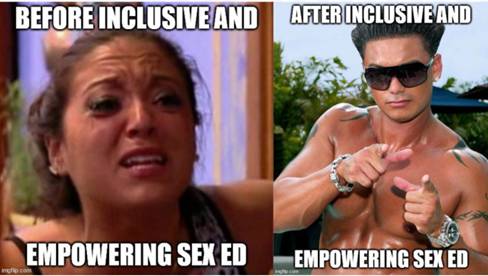
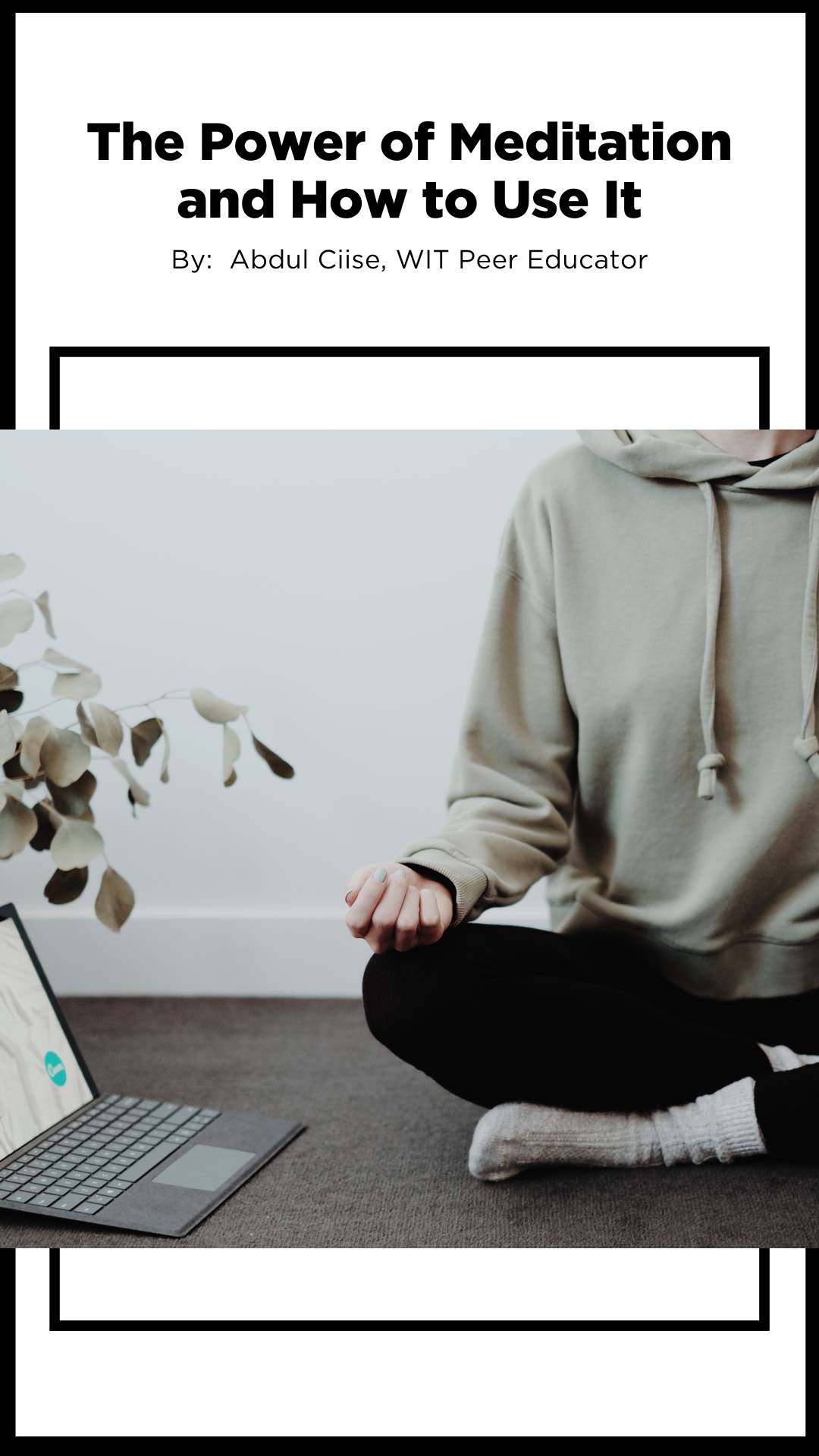
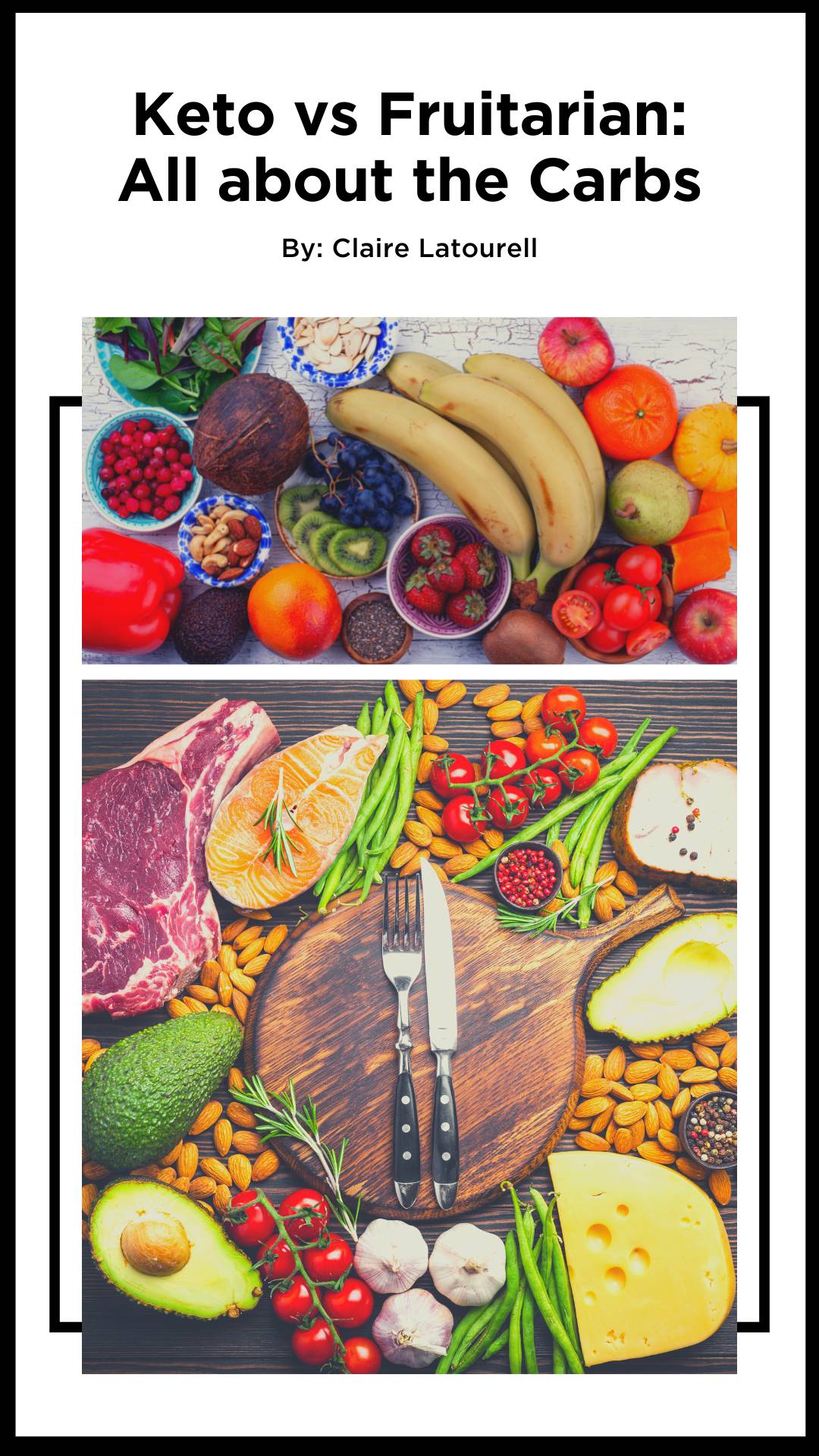
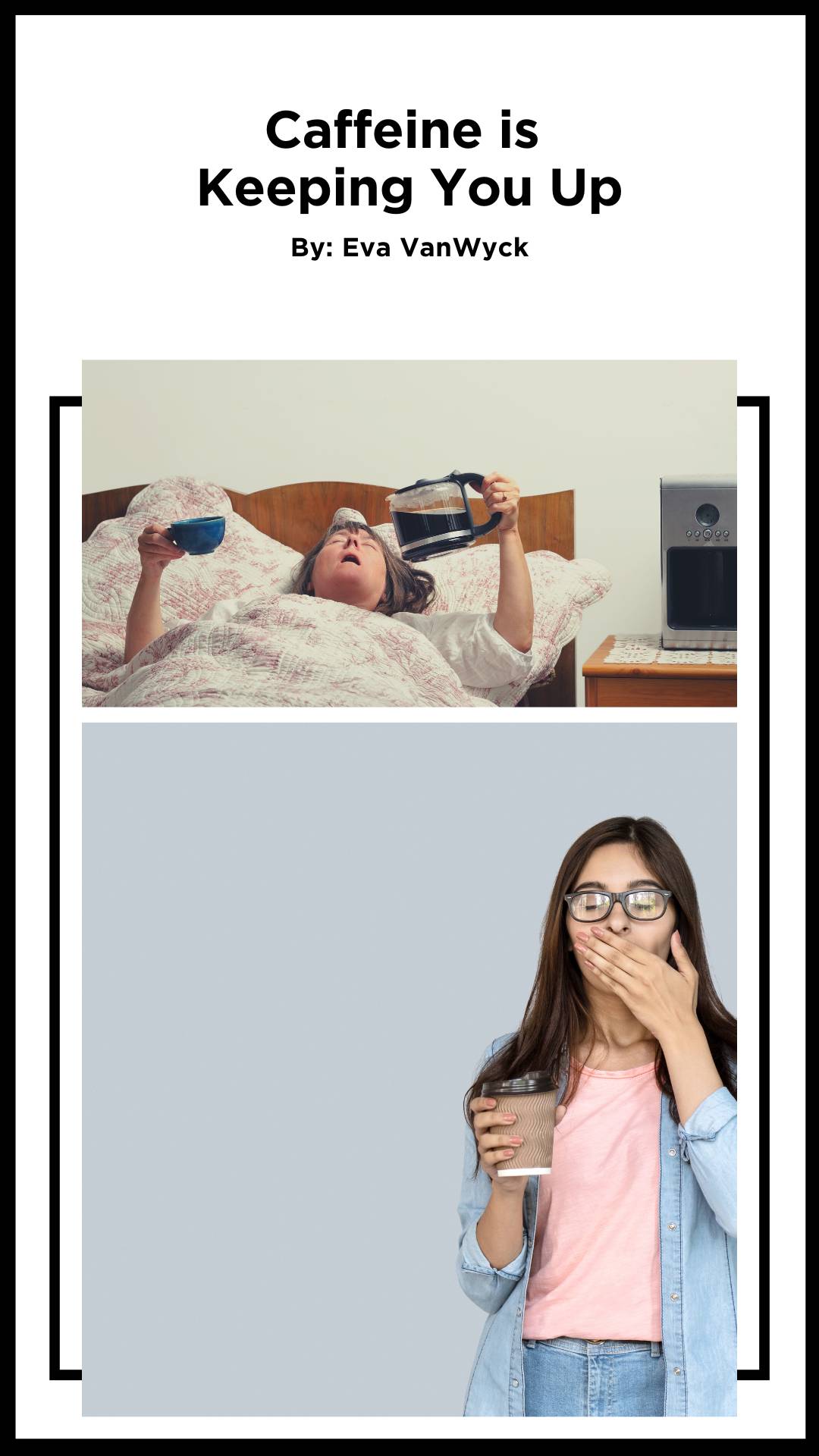
[1675439747].jpg)
